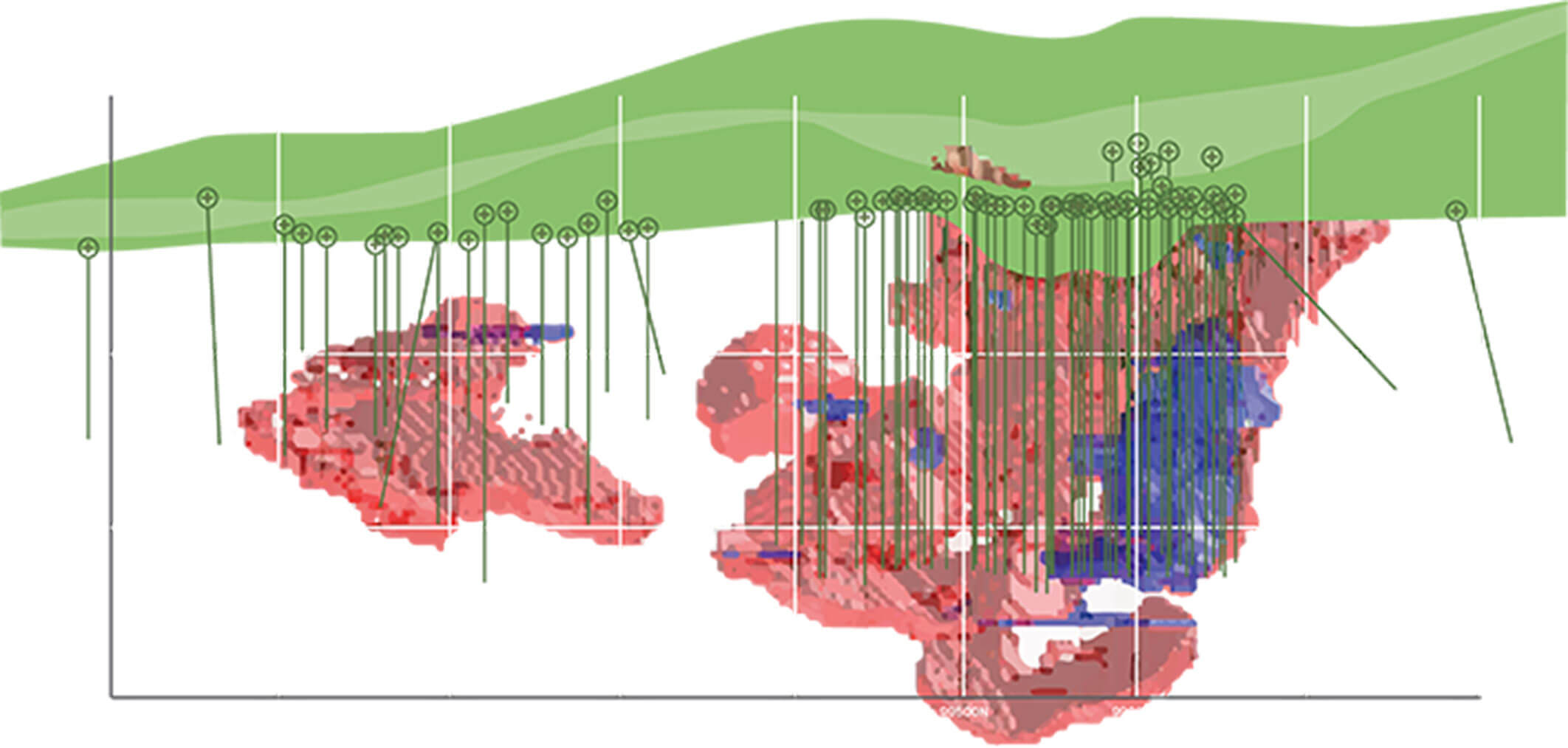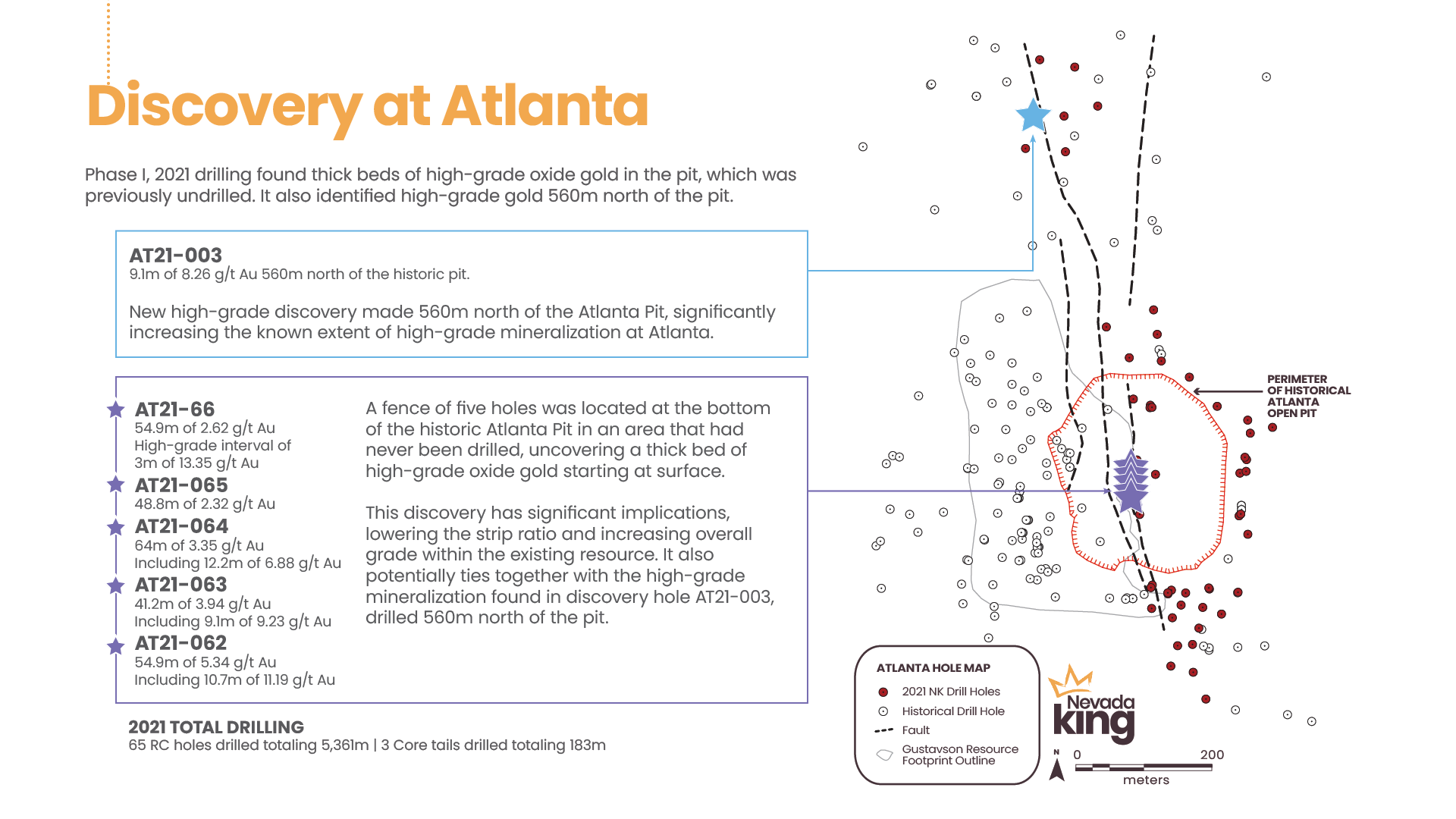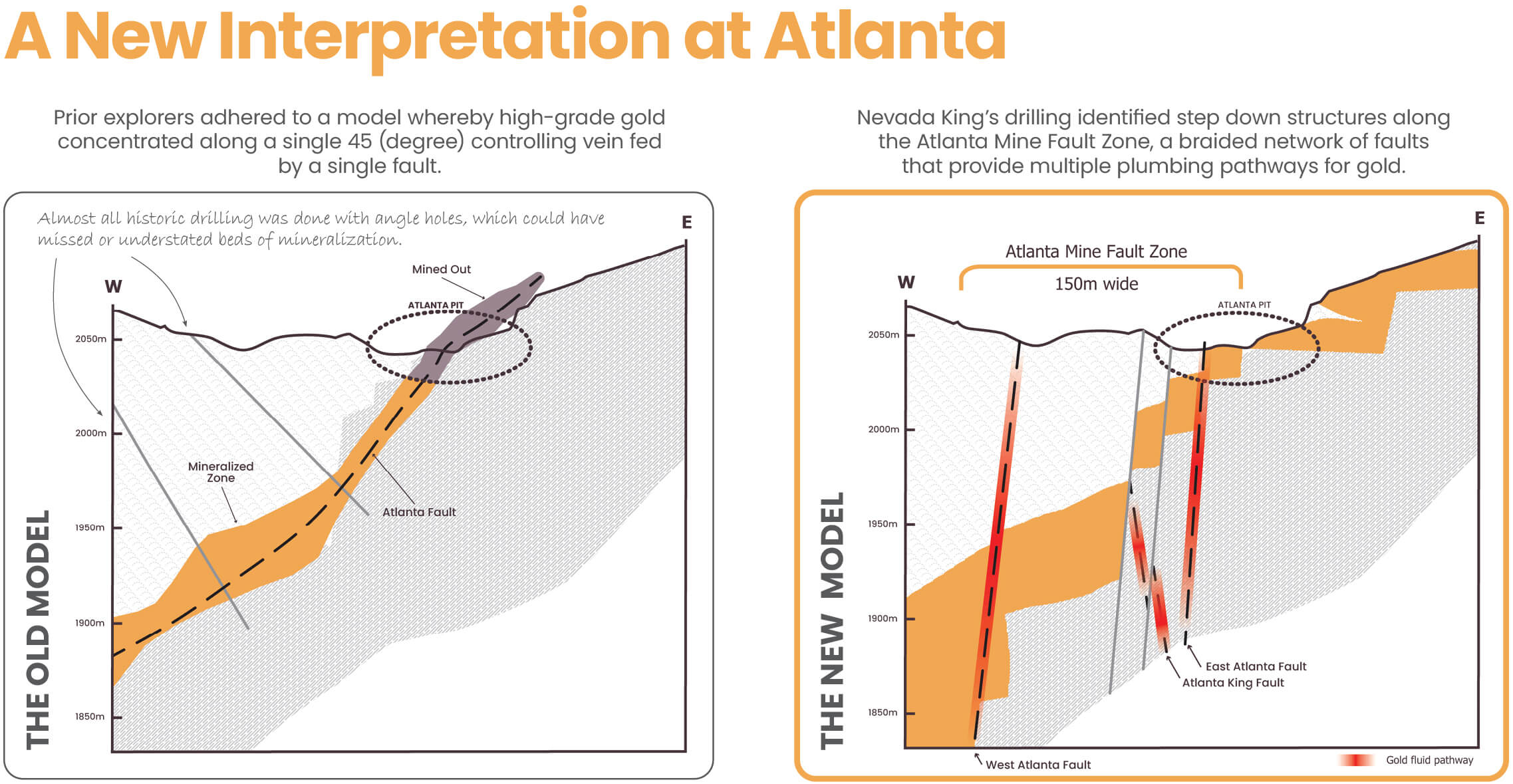Atlanta Gold Mine
Atlanta is a past producing,
open-pit gold mine located in SE Nevada
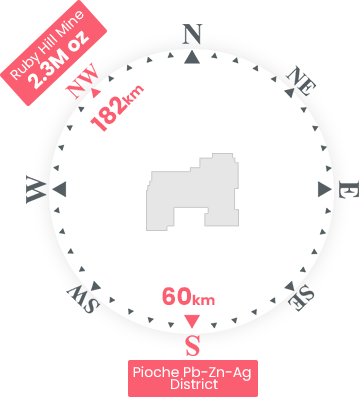
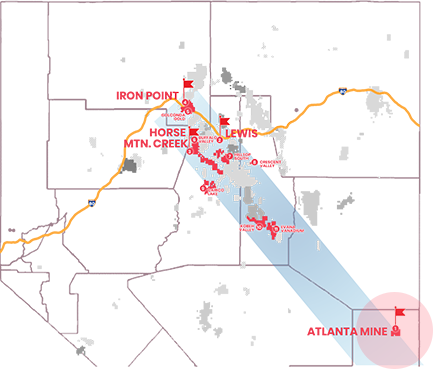
Historic production by Standard Slag (1975-1985) recovered 110,000 oz Au and 800,000 oz Ag from 1.5M tons.
Over 40,000m were drilled by Gold Fields, Kinross Gold and Meadow Bay Gold starting in the early 1990s.
The Project is 100% owned by Nevada King and includes a NI 43-101 Resource published in 2020.
Infrastructure & Permitting
County-maintained roads connect project to major highways.
Deeded 15-mile electrical power line is operational to the site with private substation.
Private water well and pipeline delivers ample water to project.
Modular building purchased to provide crew quarters during the exploration phase.
Old Mill Building and Crusher Complex have been removed.
2020 43-101 Resource, pit-constrained
$1,250/ounce gold price
Current NI 43-101 compliant gold resource by Gustavson (2020) using a 0.35 g/t cut-off and $1250/ounce gold price.
|
Resource Category |
Tonnes |
Au Grade (ppm) |
Contained Au Oz |
Ag Grade (ppm) |
Contained Ag Oz |
|---|---|---|---|---|---|
| Measured | 4,130,000 | 1.51 | 200,000 | 14.0 | 1,860,000 |
| Indicated | 6,910,000 | 1.17 | 260,000 | 10.6 | 2,360,000 |
|
Measured + Indicated |
11,000,000 | 1.30 | 460,000 | 11.9 | 4,220,000 |
| Inferred | 5,310,000 | 0.83 | 142,000 | 7.3 | 1,240,000 |
Calculations taken from Gustavson's 2020 NI-43101 Atlanta Mine Report
Source:
1 https://www.newmont.com/investors/news-release/news-details/2011/Newmont-Expands-Nevada-Growth-Potential-With-Acquisition-of-Fronteer-Gold/default.aspx
2 https://www.stockwatch.com/News/Sedardoc/4899298.pdf
3 https://ir.ssrmining.com/investors/news/press-release-details/2014/Silver-Standard-to-Purchase-Marigold-Mine/default.aspx
4 SNL Metals & Mining services.


